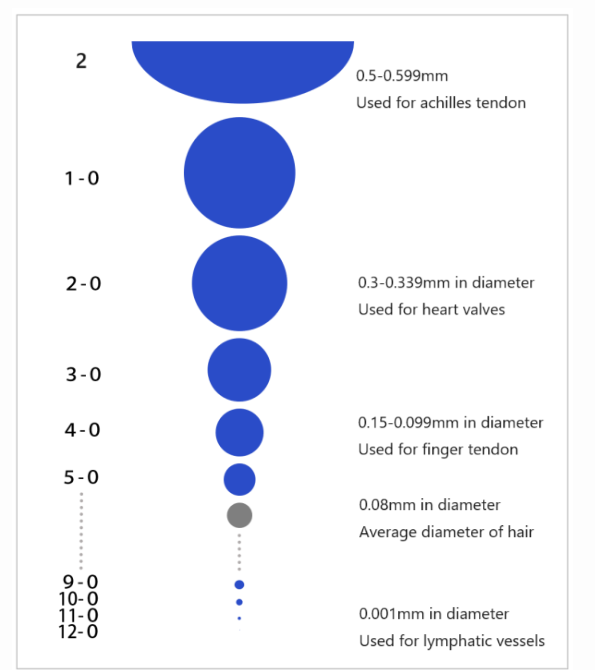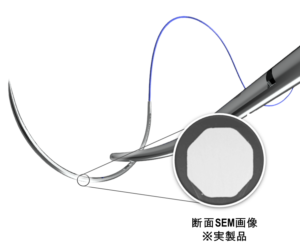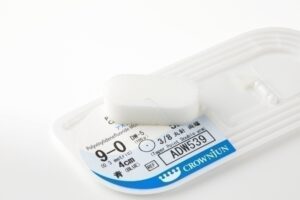Suture is a necessary equipment for conducting operations.
In 30 Century BC Egypt, linen yarn was used for suturing. Over thousands of years, various materials were used for sutures, and after AD 1000, intestines of animals and silk took major parts. After the development of synthetic fibers, synthetic sutures are used.
Today, I will introduce you about the sutures that are used nowadays.

Absorbable and Non-Absorbable Sutures
Have you ever heard of the “absorbable suture” that is used in surgeries?
Sutures can be divided into two kinds: absorbable and non-absorbable.
When removing is not necessary, absorbable suture is preferred; but if elasticity is required, non-absorbable suture is likely to be chosen.
The characteristics of the sutures are shown below.
| Absorbable Sutures | Non-Absorbable Sutures |
| ・has tensile strength for a certain amount of time, then absorbed. ・the duration of tensile strength and the absorption time differs among the types of suture. | ・almost no in-vivo deterioration (some deteriorate after a long amount of time). ・is used in tissues that require to be in place for a long amount of time. |
Absorbable suture, which is used from skin to inner body parts, has a bigger share in the suture market than non-absorbable suture.
Synthetic and Natural Materials
Sutures can be devided further by determining whether its synthetic or natural.
| Synthetic Materials | Natural Materials | |
| Material | ・absorbable sutures: PGA, P(LA/CL) ・non-abosrbable sutures: nylon, polyester, polypropylene, PVDF | ・catgut (made of animal’s intestine), silk |
| Characteristics | ・inert and strong. | ・has been used for a long time. ・lacks strength compared to synthetic materials. |
Synthetic suture is becoming the basic suture nowadays, but silk suture is still used. Beside synthetic and natural materials, there are sutures made of metal, which is used to suture bones.
Monofilament and Braided Sutures
The structure of the suture also affects the characteristic of the suture.
| Monofilament Sutures | Braided Sutures |
| ・made of one thread, having a highly smooth tissue passage. ・less likely to have bacterial infection. | ・made of several threads, possessing flexibility. ・the tying knot is small and has a strong knot retention. |
Size of the Suture
Sutures are also divided by its thickness.
According to USP (US Pharmacopeia), the thickest suture is size 10, and the suture becomes thinner as the size goes down. The size below size 1 is expressed as 1-0, 2-0, 3-0.
The thinnest suture is 12-0, which its diameter is determined between 0.001mm to 0.009mm. It can barely be seen by naked eye. Below is the picture I made according to the actual ratio, not the actual size, but 12-0 is still very hard to see.

Finally
There are various kinds of sutures depending on:
- absorbable/non-absorbable
- natural material/synthetic material
- monofilament/braided
- various size
We produce various sutures by attatching various needles to sutures. If you want to know about our needles, please check out our articles in TSUNAGU and in our homepage.
Check out our articles about needles and sutures






